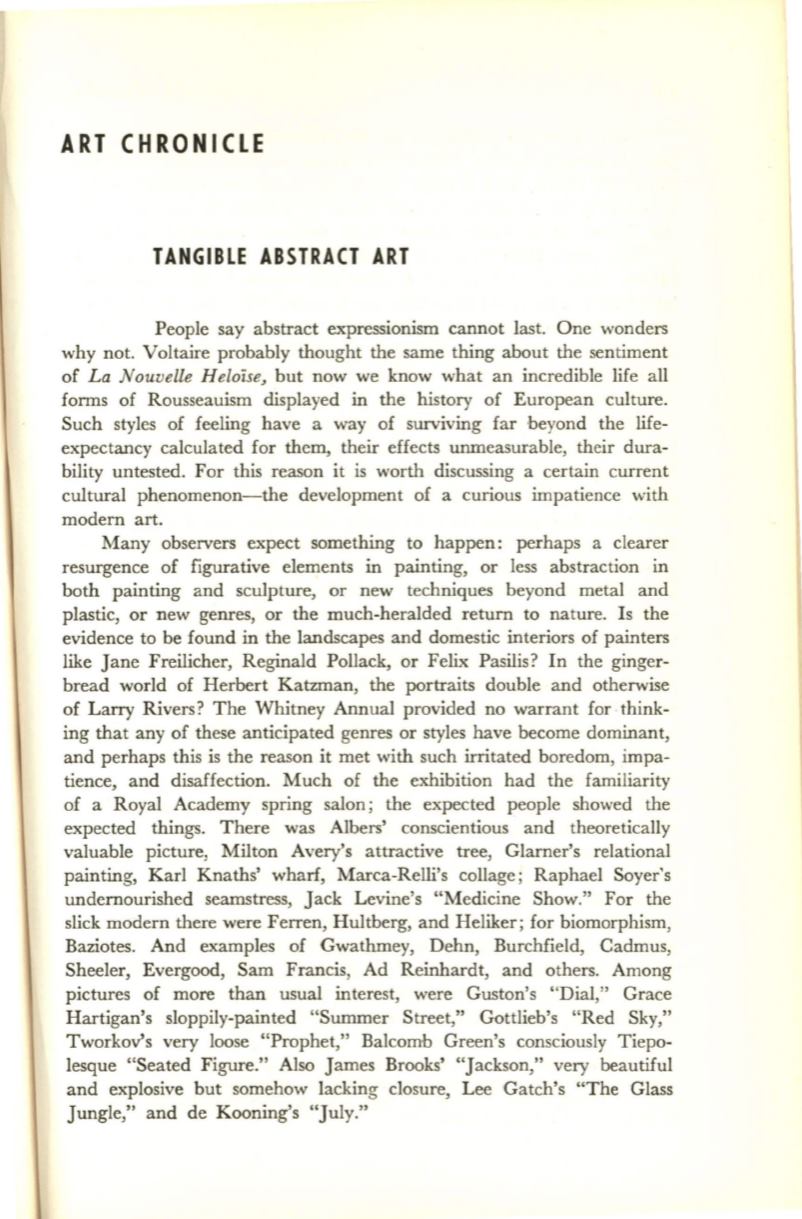
ART CHRONICLE
TANGIBLE ABSTRACT ART
People say abstract expressionism cannot last. One wonders
why not. Voltaire probably thought the same thing about the sentiment
of
La Nouvelle Heloise,
but now we know what an incredible life all
forms of Rousseauism displayed in the history of European culture.
Such styles of feeling have a way of surviving far beyond the life–
expectancy calculated for them, their effects unmeasurable, their dura–
bility untested. For this reason it is worth discussing a certain current
cultural phenomenon-the development of a curious impatience with
modern art.
Many observers expect something to happen: perhaps a clearer
resurgence of figurative elements in painting, or less abstraction in
both painting and sculpture, or new techniques beyond metal and
plastic, or new genres, or the much-heralded return to nature. Is the
evidence to be found in the landscapes and domestic interiors of painters
like Jane Freilicher, Reginald Pollack, or Felix Pasilis? In the ginger–
bread world of Herbert Katzman, the portraits double and otherwise
of Larry Rivers? The Whitney Annual provided no warrant for ·think–
ing that any of these anticipated genres or styles have become dominant,
and perhaps this is the reason it met with such irritated boredom, impa–
tience, and disaffection. Much of the exhibition had the familiarity
of a Royal Academy spring salon; the expected people showed the
expected things. There was Albers' conscientious and theoretically
valuable picture, Milton Avery's attractive tree, Glarner's relational
painting, Karl Knaths' wharf, Marca-ReIli's collage; Raphael Soyer's
undernourished seamstress, Jack Levine's "Medicine Show." For the
slick modern there were Ferren, Hultberg, and Heliker; for biomorphism,
Baziotes. And examples of Gwathmey, Dehn, Burchfield, Cadmus,
Sheeler, Evergood, Sam Francis, Ad Reinhardt, and others. Among
pictures of more than usual interest, were Guston's "Dial," Grace
Hartigan's sloppily-painted "Summer Street," Gottlieb's "Red Sky,"
Tworkov's very loose "Prophet," Balcomb Green's consciously Tiepo–
lesque "Seated Figure." Also James Brooks' "Jackson," very beautiful
and explosive but somehow lacking closure, Lee Gatch's "The Glass
Jungle," and de Kooning's "July."


